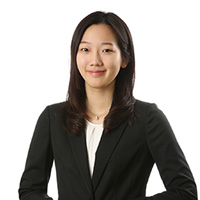Korea braces for first holiday without social distancing
By Im Eun-byelPublished : Aug. 24, 2022 - 16:19

The Korean government will maintain its ban on in-person visits to nursing homes and long-term care hospitals during the upcoming Chuseok holidays, as the nation marks its first Korean Thanksgiving without social distancing in three years.
“The ban on in-person visits to nursing homes and long-term care hospitals will be maintained in a precaution against COVID-19 transmission for the elderly,” Prime Minister Han Duck-soo said at a meeting at the governmental complex in Sejong, Wednesday.
“We cannot be at ease as more will travel and meet others as the second semester has started and due to the Chuseok holidays,” Han said. “The measure is unfortunate but inevitable to prevent the transmission of the elderly.”
Chuseok, which falls on Sept. 10 this year, is the first national holiday without social distancing rules in three years, Han said, adding that the government will soon announce details for anti-epidemic measures during the Chuseok holiday.
The prime minister also continued to encourage youth to get vaccinated, stressing it is the most effective means against the spreading of COVID-19.
“Vaccination is the most effective means of protecting adults, children and youth,” Han said. “There are less reports on abnormal reactions to vaccination on children and youths compared to all age groups and the reactions are minor.”
South Korea saw 139,339 new daily confirmed cases Wednesday, staying above 100,000 for the second consecutive day.
The figure, from the 24 hours ending midnight Tuesday, pushed up the country’s total caseload to 22,588,640, the Korea Disease Control and Prevention Agency said.
Daily infections had jumped to 180,763 cases last Wednesday from 84,099 a day earlier. The daily tally then fell over the past five days, logging 59,046 on Monday, but rebounded to 150,258 on Tuesday.
The country reported 63 COVID-19 deaths, bringing the death toll to 26,224, the KDCA said. The fatality rate stood at 0.12 percent.
The number of critically ill patients came to 573, up 86 from the previous day.
The recent decline in new infections raised cautious optimism that the latest virus wave may have passed its peak. But authorities remain on high alert over a possible resurgence in the COVID-19 pandemic this fall.
The KDCA expected the number of daily infections will show a declining trend this week or next week but warned that COVID-19 deaths and the number of critically ill patients could increase in the next two to three weeks.
The health agency projected the numbers of critically ill patients and COVID-19 deaths could reach 800 to 900 and 100 to 140, respectively, in early September.
Of the locally transmitted cases, Seoul reported 20,569 new cases, and Gyeonggi Province that surrounds the capital added 32,608 new infections. Incheon, a port city just west of Seoul, identified 7,013 new cases. These three regions took up a total of 43 percent of the daily caseload.
Since the first local confirmation of COVID-19 on Jan. 20, 2020, the country has gone through multiple pandemic waves.
The latest came during the height of the summer vacation season, fueled by the highly transmissible omicron subvariant BA.5 and eased virus curbs.
By Im Eun-byel and news reports (silverstar@heraldcorp.com)


















